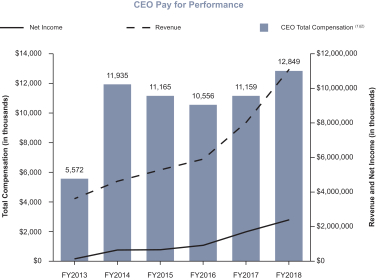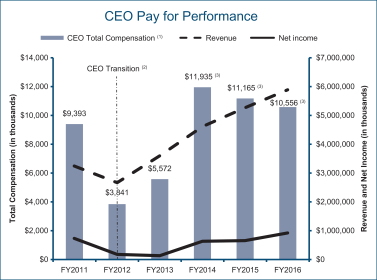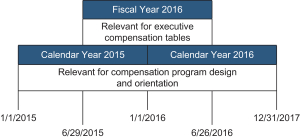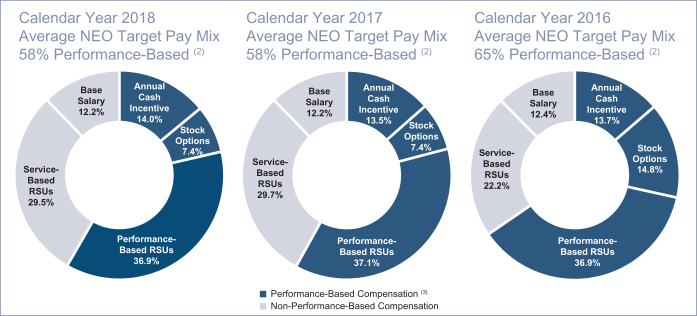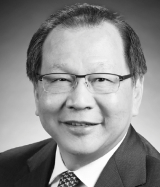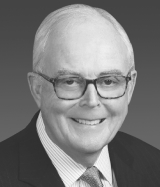If you choose to vote in person, you will have an opportunity to do so at the annual meeting. You may either bring your proxy
Continues on next page u
| | |
Lam Research Corporation 2016 Proxy Statement | | 57 |
card to the annual meeting, or if you do not bring your proxy card, the Company will pass out written ballots to anyone who was a stockholder as of the Record Date. As noted above, if you are a beneficial owner (an owner who is not the record holder of their shares), you will need to obtain a proxy from your brokerage firm, bank, or the stockholder of record holding shares on your behalf.
Voting by 401(k) Plan Participants
Participants in Lam’s Savings Plus Plan, Lam Research 401(k), or the “401(k) Plan,” who held Lam common stock in their personal 401(k) Plan accounts as of the Record Date will receive this proxy statement, so that each participant may vote, by proxy, his or her interest in Lam’s common stock as held by the 401(k) Plan. The 401(k) Plan trustee will aggregate and vote proxies in accordance with the instructions in the proxies of employee participants that it receives.
Stockholder Accounts Sharing the Same Last Name and Address; Stockholders Holding Multiple Accounts
To reduce the expense of delivering duplicate proxy materials to stockholders who may have more than one account holding Lam Research stock but who share the same address, we have adopted a procedure approved by the SEC called “householding.” Under this procedure, stockholders of record who have the same address and last name will receive only one copy of our proxy statement and annual report unless one of the stockholders notifies our investor relations department that one or more of them want to receive separate copies. This procedure reduces duplicate mailings and therefore saves printing and mailing costs, as well as natural resources. Stockholders who participate in householding will continue to have access to all proxy materials athttp:https://investor.lamresearch.com, as well as the ability to submit separate proxy voting instructions for each account through the internet or by phone.telephone.
Stockholders holding multiple accounts of Lam common stock may request separate copies of the proxy materials by contacting us by phone telephone(510-572-1615), by mail (to Investor Relations, Lam Research Corporation, 4650 Cushing Parkway, Fremont, California 94538) or by email (toinvestor.relations@lamresearch.com). Stockholders may also contact us by phone,telephone, mail or email to request consolidation of proxy materials mailed to multiple accounts at the same address.
Stockholder-Initiated Proposals and Nominations for 20172019 Annual Meeting
Proposals submitted under SEC rules for inclusion in the Company’s proxy statement. Stockholder-initiated proposals (other than director nominations) may be eligible for inclusion
in our proxy statement for next year’s 20172019 annual meeting of stockholders (in accordance with SECRule 14a-8) and for consideration at the 20172019 annual meeting.meeting of stockholders. The Company must receive a stockholder proposal no later than June 1, 2017May 29, 2019 for the proposal to be eligible for inclusion. Any stockholder interested in submitting a proposal or nomination is advised to contact legal counsel familiar with the detailed securities law requirements for submitting proposals or nominations for inclusion in a company’s proxy statement.
Proposed nominations of directors under Company bylaws for Proxy Access.Our bylaws provide for “Proxy Access.” Pursuant to the Proxy Access provisions of our bylaws, a stockholder, or a group of up to 20 stockholders, owning at least 3% of our outstanding common stock continuously for at least three years can nominate and include in our proxy materials director nominees constituting up to the greater of two individuals or 20% of the Board, provided that the stockholders and the nominees satisfy the requirements specified in our bylaws. If a stockholder or group of stockholders wishes to nominate one or more director candidates to be included in our proxy statement for the 2019 annual meeting of stockholders pursuant to Proxy Access, all of the information required by our bylaws must be received by the Secretary of the Company no earlier than April 29, 2019, and no later than May 29, 2019.
Proposals and nominations under Company bylaws.bylaws for presentation at the annual meeting but for which the proponent does not seek to include materials in our proxy statement.Stockholders may also submit proposals for consideration and nominations of director candidates for election at the annual meeting by following certain requirements set forth in our bylaws. The current applicable provisions of our bylaws are described below. ProposalsThese proposals will not be eligible for inclusion in the Company’s proxy statement for the 20172019 annual meeting of stockholders unless they are submitted in compliance with then applicable SEC rules;rules or pursuant to the Proxy Access described above; however, they will be presented for discussionconsideration at the 2019 annual meeting of stockholders if the requirements established by our bylaws for stockholder proposals and nominations have been satisfied. Under current SEC rules, stockholder nominations for directors are not eligible for inclusion in the Company’s proxy materials.
Our bylaws establish requirements for stockholder proposals and nominations not included in our proxy statement to be discussedconsidered at the annual meeting. Assuming that the 20172019 annual meeting of stockholders takes place at roughly the same date next year as the 20162018 annual meeting (and subject to any change in our bylaws – whichbylaws-which would be publicly disclosed by the Company – andCompany-and to any provisions of then-applicable SEC rules), the principal requirements for the 2017 annual meeting would be as follows:
For proposals and for nominations:
Aa stockholder of record or “Stockholder,” must submit the proposal or nomination in writing; it must be received by the secretary of the Company no earlier than July 16, 2017, and no later than August 15, 2017;
For each Stockholder and beneficial owner of Company common stock, or “Beneficial Owner,” if any, on behalf of whom the proposal or nomination is being made the Stockholder’s notice to the secretary of a proposal or nomination must state:
| ° | | the name and record address of the Stockholder and the Beneficial Owner; |
| ° | | the class, series and number of shares of capital stock of the Company that are owned, directly or indirectly, beneficially and of record by the Stockholder and the Beneficial Owner and any affiliates of such parties; |
| ° | | the name of each nominee holder of shares of all stock of the Company owned beneficially but not of record by the Stockholder and the Beneficial Owner and any affiliates of such parties; |
| ° | | a description of any options, warrants, convertible securities, stock appreciation rights or similar rights (“Derivative Instruments”) held by the Stockholder, the Beneficial Owner, or any affiliates of such parties with respect to the Company’s stock, and any other direct or indirect opportunities to profit or share in any profit derived from any increase or decrease in the value of shares of the Company; |
| ° | | whether and the extent to which any other transaction agreement, arrangement or understanding, including any short position or any borrowing or lending of shares of stock of the Company, has been made by or on behalf of the Stockholder, the Beneficial Owner or any affiliates of such parties, the effect or intent of any of the foregoing being to mitigate loss to, or to manage risk or benefit of stock price changes for, such Stockholder, Beneficial Owner or any affiliates of such parties, or to increase or decrease the voting power or pecuniary or economic interest of such Stockholder, Beneficial Owner or any affiliates of such parties, with respect to stock of the Company; |
| ° | | a description of any proxies, contracts, or other voting arrangements pursuant to which the Stockholder or the Beneficial Owner has a right to vote, directly or indirectly, the Company’s stock; |
| ° | | a description of any rights to dividends separated or separable from the underlying shares of the Company to which the Stockholder or the Beneficial Owner are entitled; |
| ° | | any performance-related fees (other than an asset-based fee) that the Stockholder or the Beneficial Owner is directly or indirectly entitled to based on any increase or decrease in the value of shares of the corporation or Derivative Instruments, if any, as of the date of such notice, including without limitation any such interests held by members of each such party’s immediate family sharing the same household (which information set forth in this paragraph shall be supplemented by such stockholder or such beneficial owner, as the case may be, not later than 10 days after the record date for determining the stockholders entitled to vote at the meeting; provided, that if such date is after the date of the meeting, not later than the day prior to the meeting) |
| ° | | a representation that the Stockholder giving notice intends to appear in person or by proxy at the annual or special meeting to bring before the meeting such business or to nominate the persons named in the notice; |
| ° | | any other information relating to the Stockholder or the Beneficial Owner that would be required to be disclosed in a proxy statement or other filings required to be made in connection with solicitations of proxies for, as applicable, the proposal and/or for the election of directors in a contested election pursuant to section 14 of the Exchange Act, and the rules and regulations pursuant thereto; and |
| ° | | a statement whether or not each such party will deliver a proxy statement and form of proxy to holders of, in the case of a proposal, at least the percentage of voting power of all the shares of capital stock of the Company required under applicable law to carry the proposal or, in the case of a nomination or nominations, at least the percentage of voting power of all of the shares of capital stock of the Company reasonably believe by the Stockholder or Beneficial Owner, as the case may be, to be sufficient to elect the nominee or nominees proposed to be nominated by the record stockholder. |
Additionally, forproposals, the notice must set forth a brief description of such business (including the text of any resolutions proposed for consideration and, if such business includes a proposal to amend the bylaws, the text of the proposed amendment), the reasons for conducting such business at the meeting and any material interest in such business of such Stockholder and the Beneficial Owner, if any, on whose behalf the proposal is made.
Additionally, for nominations, the notice must:
set forth, as to each person whom the Stockholder proposes to nominate for election or reelection as a director, all information relating to such person as would be required to be disclosed in solicitations of proxies for the election of such nominees as directors pursuant to Regulation 14A under the Exchange Act;
set forth the reasons for conducting such nomination at the meeting and any material interest in such nomination of such Stockholder and the Beneficial Owner, if any, on whose behalf the nomination is made (including any anticipated benefit from the nomination of directors to such Stockholder and the Beneficial Owner or any affiliates of such persons);
set forth, as to each person whom the Stockholder proposes to nominate for election or reelection as a director, the following information:
| ° | | the class, series and number of shares of capital stock of the Company that are owned, directly or indirectly, beneficially and of record by such person or any affiliates of such person; |
| ° | | the name of each nominee holder of shares of all stock of the Company owned beneficially but not of record by such person and any affiliates of such person; |
| ° | | a description of any Derivative Instruments directly or indirectly owned beneficially by such person or any affiliates of such person, and any other direct or indirect opportunities to share in any profit derived from any increase or decrease in the value of shares of the Company; |
| ° | | whether and the extent to which any other transaction agreement, arrangement or understanding, including any short position or any borrowing or lending of shares of stock of the Company, has been made by or on behalf of
|
Continues on next page u
| | |
Lam Research Corporation 20162018 Proxy Statement | | 59 |
| such person or any affiliates of such person, the effect or intent of any of the foregoing being to mitigate loss to, or to manage risk or benefit of stock price changes for, such person or any affiliates of such person, or to increase or decrease the voting power or pecuniary or economic interest of such person or any affiliates of such person, with respect to stock of the Company;
|
| ° | | a description of (i) all agreements, arrangements, or understandings (whether written or oral) between such Stockholder or any affiliates of such party, and any proposed nominee or any affiliates of such proposed nominee and (ii) all agreements, arrangements, or understandings (whether written or oral) between such Stockholder or any affiliates of such party, and any other party or parties (including their names) pursuant to which the nomination(s) are being made by such party, or otherwise relating to the Company or their ownership of capital stock of the Company; and |
| ° | | a representation that the Stockholder giving notice intends to appear in person or by proxy at the annual meeting to bring before the meeting such business or to nominate the persons named in the notice; |
be accompanied by a written representation and agreement that such proposed nominee:
| ° | | is not and will not become a party to any agreement, arrangement or understanding with, and has not given any commitment or assurance to, any person or entity as to how such proposed nominee, if elected as a director of the Company, will act or vote on any issue or question, |
| ° | | has disclosed, and will disclose, to the Company any agreement, arrangement or understanding that such proposed nominee has with any person or entity other than the Company with respect to any direct or indirect compensation, reimbursement or indemnification in connection with service or action as a director of the Company, |
| ° | | in such person’s individual capacity, would be in compliance with, if elected as a director of the Company, and will comply with and, upon election, execute any61 |
| | requisite documentation pertaining to all applicable publicly disclosed confidentiality, corporate governance, conflict of interest, Regulation FD, code of ethics, and stock ownership and trading policies and guidelines of the Company, such documentation to include a confidentiality agreement between the Company and such proposed nominee, and
|
| ° | | consents to being named in any proxy statement of the Company, or other filings required to be made by the Company in connection with the solicitation of proxies for election of directors pursuant to section 14 of the Exchange Act and the rules and regulations promulgated thereunder, and to serve as a director if elected; |
nomination in writing and it must be accompanied by a statement whether such person, if elected, intends to tender, promptly following such person’s election or reelection, an irrevocable conditional resignation effective upon such person’s failure to receive the required vote for reelection or to be renominatedreceived by the board atSecretary of the next meeting at which such person would face reelectionCompany no earlier than July 13, 2019, and upon acceptance of such resignation by the board, in accordance with our corporate governance guidelines.
no later than August 12, 2019.For a full description of the requirements for submitting a proposal or nomination, see the Company’s bylaws. Submissions or questions should be sent to: Secretary, Lam Research Corporation, 4650 Cushing Parkway, Fremont, California 94538.
By Order of the Board of Directors,

Sarah A. O’Dowd
Secretary
Fremont, California
Dated: September 29, 201626, 2018
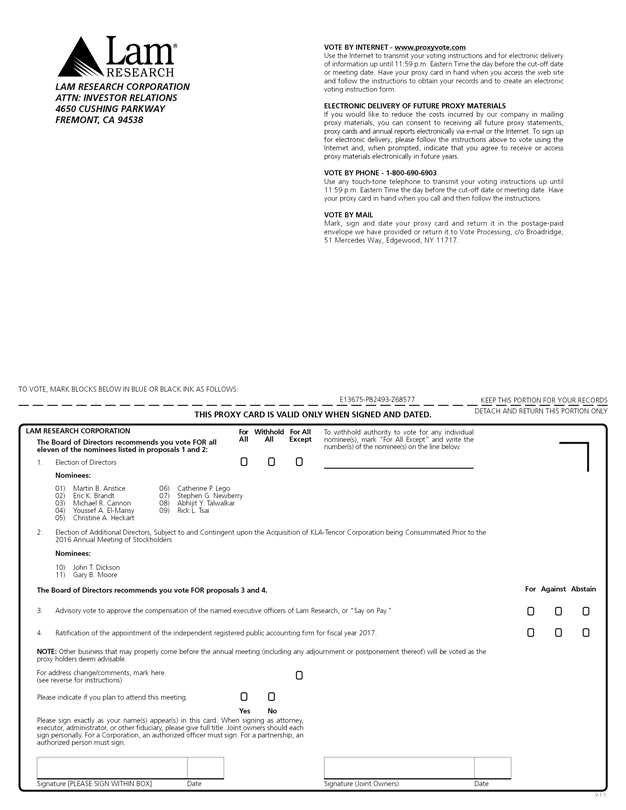
LamR RESEARCH
LAM RESEARCH CORPORATION
ATTN: INVESTOR RELATIONS
4650 CUSHING PARKWAY
FREMONT, CA 94538
VOTE BY INTERNET - www.proxyvote.com
Use
1999 EMPLOYEE STOCK PURCHASE PLAN
Amended and Restated Effective as of August 29, 2018
This Amended and Restated Lam Research Corporation 1999 Employee Stock Purchase Plan (“Plan”) is amended and restated as of August 29, 2018. The Plan is intended to provide employees of the InternetCompany and its Designated Subsidiaries with an opportunity to transmit yourpurchase Common Stock of the Company through accumulated payroll deductions. The Company’s intention is to have the Plan qualify as an “employee stock purchase plan” under Section 423 of the Code (the “423(b) Plan”), although the Company makes no undertaking or representation to maintain such qualification. The provisions of the 423(b) Plan, accordingly, will be construed so as to extend and limit Plan participation in a uniform and nondiscriminatory basis consistent with the requirements of Section 423(b) of the Code. In addition, this Plan document authorizes the grant of rights to purchase stock pursuant to rules, procedures orsub-plans adopted by the Board or Administrator that are designed to achieve tax, securities law or other Company compliance objectives in particular locations outside the United States.
All grants made to participants outside of the United States shall be deemed to be made under aNon-U.S.Sub-Plan, unless otherwise designated at the time of grant.
(a) “Administrator” means the Board, the Compensation Committee of the Board or any committee the Board may subsequently appoint to administer the Plan pursuant to Section 14 hereof, if one is appointed. If at any time or to any extent the Board shall not administer the Plan, then the functions of the Board specified in the Plan shall be exercised by the Administrator. The VP of Human Resources shall administer theNon-U.S.Sub-Plans of the Plan and shall be the “Administrator” for such purposes.
(b) “Annual Increase” means the number of shares of Common Stock that, pursuant to Section 13, may annually be added to the number of shares issuable under the Plan.
(c) “Board” means the Board of Directors of the Company.
(d) “Code” means the Internal Revenue Code of 1986, as amended.
(e) “Common Stock” means the Common Stock of the Company.
(f) “Company” means Lam Research Corporation, a Delaware corporation.
(g) “Compensation” means all regular, straight-time gross earnings, exclusive of payments for overtime, shift premium, incentive compensation, incentive payments, bonuses, commissions, or other compensation.
(h) “Continuous Status as an Employee” means the absence of any interruption or termination of service as an Employee. Continuous Status as an Employee shall not be considered interrupted in the case of a leave of absence agreed to in writing by the Company, provided that such leave is for a period of not more than 90 days orre-employment upon the expiration of such leave is guaranteed by contract or statute.
(i) “Designated Subsidiaries” means the Subsidiaries that have been designated by the Board or Administrator from time to time in its sole discretion as eligible to participate in this Plan.
(j) “Employee” means any person, including an officer or an employee member of the Board of Directors, who is customarily employed for at least 20 hours per week by the Company or one of its Designated Subsidiaries. For purposes of the 423(b) Plan, whether an individual qualifies as an Employee shall be determined by the Administrator, in its sole discretion, by reference to Section 3401(c) of the Code and the regulations promulgated thereunder. Unless the Administrator makes a contrary determination, the Employees of the Company shall, for all purposes of the 423(b) Plan, be those individuals who satisfy the customary employment criteria set forth above and are carried as employees by the Company or a Designated Subsidiary for regular payroll purposes. For purposes of a Non U.S.Sub-Plan, the Administrator may determine that Employees are eligible to participate even if they are employed for less than twenty (20) hours per week if, in the Administrator’s sole judgment, applicable laws require such a determination.
(k) “Exercise Date” means such business days during each Offering Period of this Plan as may be identified by the Administrator pursuant to Section 8 of this Plan.
(l) “Interim Offering Date” means the first business day following an Exercise Date other than the last Exercise Date of an Offering Period.
(m) “Maximum Share Amount” means the maximum number of shares of Common Stock that a Participant can purchase during any single Offering Period as set forth in Section 3(d)(ii) of this Plan.
(n)“Non-U.S.Sub-Plan” shall mean asub-plan of the Plan that does not necessarily meet the requirements set forth in Section 423(b) of the Code, as amended.
(o) “Offering Date” means the first business day of an Offering Period.
(p) “Offering Period” means a period established by the Administrator pursuant to Section 4 of this Plan during which payroll deductions are accumulated from Participants and applied to the purchase of Common Stock.
(q) “Participant” means an Employee who has elected to participate in this Plan pursuant to Section 5 hereof.
(r) “Plan” means this Amended and Restated Lam Research Corporation 1999 Employee Stock Purchase Plan, including both the 423(b) Plan and anyNon-U.S.Sub-Plan unless otherwise indicated.
(s) “Purchase Right” means a right to purchase Common Stock granted pursuant to Section 7 of this Plan.
(t) “Subsidiary” means a corporation, domestic or foreign, of which not less than 50% of the voting instructionsshares are held by the Company or a Subsidiary, whether or not such corporation now exists or is hereafter organized or acquired by the Company or a Subsidiary.
(u)“423(b) Plan” means an employee stock purchase plan that is designed to meet the requirements set forth in Section 423(b) of the Code, as amended. The provisions of this 423(b) Plan should be construed, administered and enforced in accordance with Section 423(b) of the Code.
| 3. | Eligibility; Accrual and Purchase Limits. |
(a) Regular Participation. Any person who is, or will be, an Employee on the Offering Date of a given Offering Period shall be eligible to participate in this Plan during such Offering Period, subject to the requirements of Section 5(a) of this Plan.
(b) Interim Participation. Any person who becomes an Employee after the Offering Date of an Offering Period and before an Interim Offering Date shall be eligible to participate in this Plan during such Offering Period, but only on and beginning with the first Interim Offering Date on or before which such person becomes an Employee, and subject to the requirements of Section 5(a) of this Plan.
(c) Exclusion of Five Percent Stockholders. Notwithstanding paragraphs (a) and (b) of this Section 3, an Employee shall not be eligible to participate in this Plan during an Offering Period to the extent that immediately after the grant of a Purchase Right on an Offering Date or Interim Offering Date, the Employee (or any other person whose stock would be attributed to the Employee under Section 424(d) of the Code) would own stock and/or hold outstanding purchase rights to purchase stock possessing five percent or more of the total combined voting power or value of all classes of stock of the Company or of any Subsidiary.
(d)Accrual andPurchase Limits.Notwithstanding any other provisions of this Plan or any subscription agreement or other offering documents, no Participant may (i) accrue rights to purchase stock under all employee stock purchase plans of the Company and its Subsidiaries at a rate that exceeds $25,000 of fair market value of such stock (determined at the date of grant of those purchase rights) for electronic deliveryeach calendar year in which the purchase rights would be outstanding at any time; or (ii) purchase more than 10,000 shares of information up until 11:59 p.m. Eastern Timethe Company’s Common Stock during any Offering Period. Notwithstanding the share limit described in clause 3(d)(ii), the Administrator may designate an alternative shares limit (other than zero) in its sole discretion, prior to the commencement of any Offering Period to which the alternative limit applies. If the Administrator establishes an alternative limit, all participants shall be notified of the alternative limit prior to the commencement of the Offering Period to which the limit first applies. Any alternative limit set by the Administrator shall continue to apply with respect to all succeeding Exercise Dates and Offering Periods unless revised by the Administrator as provided in this clause 3(d)(ii).
The duration of each Offering Period shall be determined by the Administrator, provided that an Offering Period shall be no shorter than 3 months and no longer than 24 months (measured from the first business day of the first month to the last business day of
the last month) and succeeding Offering Periods shall be the same duration unless otherwise determined by the Administrator pursuant to this Section. Unless otherwise determined by the Administrator:
(a) a new Offering Period shall begin on the first business day after the last Exercise Date of an Offering Period;
(b) a new Offering Period shall begin, and the old Offering Period shall terminate, on the first business day after an Exercise Date (other than the last Exercise Date of an Offering Period) if the fair market value (as defined in Section 7(b)(i) of this Plan) of a share of Common Stock is less than the fair market value of a share of Common Stock on the Offering Date of the Offering Period; and
(c) an Offering Period shall terminate on the date that there are no Participants enrolled in it.
(a) An Employee may become a Participant in this Plan by completing a subscription agreement, in such form or forms as the Administrator may approve from time to time, and filing it with the Company’s payroll office within 15 days before the applicable Offering Date or Interim Offering Date, unless another time for filing the subscription agreement is set by the Administrator for all Employees with respect to a given Offering Period. The subscription agreement shall authorize payroll deductions pursuant to this Plan and shall have such other terms as the Administrator may specify from time to time.
(b) At the end of an Offering Period, each Participant in the Offering Period who remains an Employee shall be automatically enrolled in the next succeeding Offering Period (a “Re-enrollment”) unless, in a manner and at a time specified by the Administrator, but in no event later than the day before the cut-offOffering Date of such succeeding Offering Period, the Participant notifies the Administrator in writing that the Participant does not wish to bere-enrolled.Re-enrollment shall be at the withholding percentage specified in the Participant’s most recent subscription agreement unless the Participant changes that percentage by timely written notice. No Participant shall be automaticallyre-enrolled whose participation has terminated by operation of Section 10 of this Plan.
(c) If an Offering Period commences pursuant to Section 4(b) of this Plan, each Employee on the Offering Date of that Offering Period shall automatically become a Participant in the commencing Offering Period. Participation shall be at the withholding percentage specified in the Participant’s most recent subscription agreement, unless the Participant notice changes that percentage by timely written notice. If the Participant has no subscription agreement on file, Participation shall be at a 0% withholding rate until changed by the Participant. No Participant shall be automaticallyre-enrolled whose participation has terminated by operation of Section 11 of this Plan.
(a) Each Participant shall have withheld a percentage of his or her Compensation received during an Offering Period. Withholding shall be in whole percentages, up to a maximum (not to exceed 15%) established by the Administrator from time to time, as specified by the Participant in his or her subscription agreement. Payroll deductions for a Participant during an Offering Period shall begin with the first payroll following the Offering Date or Interim Offering Date and shall end on the last Exercise Date of the Offering Period, unless sooner terminated by the Participant as provided in Section 11 of this Plan.
(b) All payroll deductions made by a Participant shall be credited to the Participant’s account under this Plan. A Participant may not make any additional payments into such account.
(c) A Participant may change the rate of his or her payroll deductions during an Offering Period by filing with the Administrator a new subscription agreement authorizing the change. The change shall take effect 15 days after the Administrator’s receipt of the new subscription agreement, except that increases in rate shall take effect on the day after the first Exercise Date on or after the 15th day.
(a) Grant of Purchase Rights. On the Offering Date, or (if applicable) Interim Offering Date of each Offering Period, the Participant shall be granted a Purchase Right to purchase (at theper-share price) during the Offering Period up to the lesser of (a) the number of shares of Common Stock determined by dividing (i) $25,000 multiplied by the number of (whole or part) calendar years in the Offering Period by (ii) the fair market value of a share of Common Stock on the Offering Date or Interim Offering Date; or (b) the Maximum Share Amount.
(b) Terms of Purchase Rights. Except as otherwise determined by the Administrator, each Purchase Right shall have the following terms:
| (i) | Theper-share price of the shares subject to a Purchase Right shall be 85% of the lower of the fair market values of a share of Common Stock on (a) the Offering Date, or Interim Offering Date, on which the Purchase Right was granted and (b) the Exercise Date. The fair market value of the Common Stock on a given date shall be the closing price as reported in the Wall Street Journal; provided, however, that if there is no public trading of the Common Stock on that date, then fair market value shall be determined by the Administrator in its discretion. |
| (ii) | Payment for shares purchased by exercise of Purchase Rights shall be made only through payroll deductions in accordance with Section 6 of this Plan. |
| (iii) | Upon purchase or disposition of shares acquired by exercise of a Purchase Right, the Participant shall pay, or make provision adequate to the Administrator for payment of, all tax (and similar) withholdings that the Administrator determines, in its discretion, are required due to the acquisition or disposition, including without limitation any such withholding that the Administrator determines in its discretion is necessary to allow the Company and its Subsidiaries to claim tax deductions or other benefits in connection with the acquisition or disposition. |
| (iv) | During his or her lifetime, a Participant’s Purchase Right is exercisable only by the Participant. |
| (v) | The Purchase Rights will in all respects be subject to the terms and conditions of this Plan, as interpreted by the Administrator from time to time. |
| 8. | Exercise Dates; Purchase of Shares; Refund of Excess Cash. |
(a) The Administrator shall establish one or more Exercise Dates for each Offering Period.
(b) Each Participant’s Purchase Right shall be exercised automatically on each Exercise Date during the Offering Period to purchase the maximum number of full shares up to the Maximum Share Amount at the applicable price using the Participant’s accumulated payroll deductions.
(c) The shares purchased upon exercise of a Purchase Right shall be deemed to be transferred to the Participant on the Exercise Date. A Participant will have no interest or voting right in shares covered by a Purchase Right until the Purchase Right has been exercised.
(d) Any cash remaining in a Participant’s payroll deduction account after the purchase of shares on an Exercise Date shall be carried forward in that account for application on the next Exercise Date; provided that at the termination of an Offering Period, any such cash shall be promptly refunded returned to the Participant.
| 9. | Limitations on Aggregate Shares to be Purchased. |
If the number of shares to be purchased on an Exercise Date by all Participants in this Plan exceeds the number of shares then available for issuance under this Plan, then the Company shall make a pro rata allocation of the remaining shares in as uniform a manner as shall be reasonably practicable and as the Administrator shall determine to be equitable. In such event, the Company shall give written notice of such reduction of the number of shares to be purchased under a participant’s option to each participant affected.
| 10. | Registration and Delivery of Share Certificates. |
(a) Shares purchased by a Participant under this Plan will be registered in the name of the Participant, or in the name of the Participant and his or her spouse, or in the name of the Participant and joint tenant(s) (with right of survivorship), as designated by the Participant.
(b) As soon as administratively feasible after each Exercise Date, the Company shall deliver to the Participant a certificate representing the shares purchased upon exercise of a Purchase Right. If approved by the Administrator in its discretion, the Company may instead (i) deliver a certificate (or equivalent) to a broker for crediting to the Participant’s account or (ii) make a notation in the Participant’s favor ofnon-certificated shares on the Company’s stock records.
| 11. | Withdrawal; Termination of Employment. |
(a) A Participant may withdraw all, but not less than all, of the payroll deductions credited to his account under this Plan at any time before an Exercise Date by giving written notice to the Administrator in a form the Administrator prescribes from time to time. The Participant’s Purchase Right will automatically terminate on the date of receipt of the notice, all payroll deductions credited to the Participant���s account will be refunded promptly thereafter, and no further payroll deductions will be made during the Offering Period.
(b) Upon termination of a Participant’s Continuous Status as an Employee for any reason, including retirement or meeting date. Have your proxy carddeath, the payroll deductions credited to the Participant’s account will be promptly refunded to the Participant or, in hand when you access the web sitecase of death, to the person or persons entitled thereto under Section 15 of this Plan, and follow the instructionsParticipant’s Purchase Right will automatically terminate.
(c) If a Participant fails to obtain your recordsremain in Continuous Status as an Employee during an Offering Period, the Participant will be deemed to have withdrawn from this Plan, the payroll deductions credited to the Participant’s account will be promptly refunded, and the Participant’s Purchase Right shall terminate.
(d) A Participant’s withdrawal from an offering will not affect the Participant’s eligibility to createparticipate in a succeeding Offering Period or in any similar plan that may be adopted by the Company.
| 12. | Use of Funds; No Interest. |
Amounts withheld from Participants’ Compensation under this Plan shall constitute general funds of the Company and may be used for any corporate purpose, and the Company shall not be obligated to segregate such payroll deductions. No interest shall accrue on the payroll deductions of a Participant in this Plan.
| 13. | Number of Shares Reserved. |
Subject to adjustment as provided in Section 18, the maximum aggregate number of shares of Common Stock available for issuance under the Plan shall be 7,550,771 shares of Common Stock, which may be newly issued or treasury shares, or shares acquired on the open market, the total of which includes 4,995,845 shares of Common Stock which remain available for issuance as of August 29, 2018.
This Plan shall be administered by the Administrator. The administration, interpretation, and application of this Plan by the Administrator shall be final, conclusive, and binding upon all persons. Neither Members of the Board nor the Administrator shall be liable for any action or determination taken or made in good faith with respect to the Plan, or any shares purchased or issued or Purchase Right exercised thereunder.The Administrator may also adopt rules, procedures orsub-plans applicable to particular Subsidiaries or locations. Any suchsub-plans may be designed to be outside the scope of Section 423(b) of the Code. The rules of suchsub-plans may take precedence over other provisions of this Plan, but unless otherwise superseded by the specific terms of suchsub-plan, the provisions of this Plan shall govern the operation of suchsub-plan. To the extent inconsistent with the requirements of Section 423(b), suchsub-plan and rights granted thereunder shall not be considered to comply with Section 423(b) of the Code.
| 15. | Designation of Beneficiary. |
(a) A Participant may file a written designation of a beneficiary who is to receive any shares and cash, if any, from the Participant’s account under this Plan in the event of the Participant’s death.
(b) A designation of beneficiary may be changed by the Participant at any time by written notice. In the event of the death of a Participant, and in the absence of a beneficiary validly designated under this Plan who is living at the time of the Participant’s death, the Administrator shall deliver such shares and/or cash to the executor or administrator of the Participant’s estate, or if no such executor or administrator has been appointed (to the Administrator’s knowledge), the Administrator, in its discretion, may deliver such shares and/or cash to the spouse or to any one or more dependents or relatives of the Participant or, if no spouse, dependent, or relative is known to the Administrator, then to such other person as the Administrator may designate.
Neither payroll deductions credited to a Participant’s account nor any rights with regard to the exercise of a Purchase Right or to receive shares under this Plan may be assigned, transferred, pledged, or otherwise disposed of in any way (other than by will, the laws of descent and distribution, or as provided in Section 15 hereof) by the Participant. Any such attempt at assignment, transfer, pledge, or other disposition shall be without effect, except that the Administrator may treat such act as an electronic voting instruction form.
ELECTRONIC DELIVERY OF FUTURE PROXY MATERIALS
If you would likeelection to reducewithdraw funds in accordance with Section 11 hereof.
Individual accounts will be maintained for each Participant in this Plan. Statements of account will be given to participating Employees promptly following each Exercise Date, which statements will set forth the costs incurredamounts of payroll deductions, the per share purchase price, the number of shares purchased and the remaining cash balance, if any.
| 18. | Adjustments upon Changes in Capitalization. |
(a) Subject to any required action by our companythe stockholders of the Company, the number of shares of Common Stock covered by each Purchase Right under this Plan that has not yet been exercised and the number of shares of Common Stock that have been authorized for issuance under this Plan but have not yet been placed under a Purchase Right, including, but not limited to, the Annual Increase (collectively, the“Reserves”), as well as the price per share of Common Stock covered by each Purchase Right under this Plan that has not yet been exercised, shall be proportionately adjusted for any increase or decrease in mailing proxy materials, you can consentthe number of issued shares of Common Stock resulting from a stock split, reverse stock split, stock dividend, combination or reclassification of the Common Stock, or any other increase or decrease in the number of shares of Common Stock effected without receipt of consideration by the Company; provided, however, that conversion of any convertible securities of the Company and any repurchase of shares of Common Stock pursuant to receiving all future proxy statements, proxy cardsSection 13 herein shall not be deemed to have been “effected without receipt of consideration.” Such adjustment shall be made by the Administrator, whose determination shall be final, binding, and annual reports electronically via e-mailconclusive. Except as expressly provided herein, no issue by the Company of shares of stock of any class, or securities convertible into shares of stock of any class, shall affect, and no adjustment by reason thereof shall be made with respect to, the number or price of shares of Common Stock subject to a Purchase Right.
(b) In the event of the proposed dissolution or liquidation of the Company, the then-current Offering Period will terminate immediately before the consummation of such proposed action, unless otherwise provided by the Board or the Internet. To sign up for electronic delivery, please followAdministrator (if the instructions above to vote usingAdministrator is not the Internet and, when prompted, indicate that youBoard). In the event of a proposed sale of all or substantially all of the assets of the Company, or the merger of the Company with or into another corporation (if stockholders of the Company own less than 50% of the total outstanding voting power in the surviving entity or a parent of the surviving entity after the merger), each Purchase Right under this Plan shall be assumed or an equivalent purchase right shall be substituted by the successor corporation or a parent or subsidiary of the successor corporation, unless the successor corporation does not agree to receiveassume the Purchase Right or access proxy materials electronicallyto substitute an equivalent purchase right, in future years.
VOTE BY PHONE - 1-800-690-6903
Usewhich case the Administrator may, in lieu of such assumption or substitution, accelerate the exercisability of Purchase Rights, and allow Purchase Rights to be exercisable (if the Board approves) as to shares as to which the Purchase Right would not otherwise be exercisable, on terms and for a period that the Administrator determines in its discretion. To the extent that the Administrator accelerates exercisability of Purchase Rights as described above, it shall promptly so notify all Participants in writing.
(c) The Administrator may, in its discretion, also make provision for adjusting the Reserves, as well as the price per share of Common Stock covered by each outstanding Purchase Right, if the Company effects one or more reorganizations, recapitalizations, rights offerings, or other increases or reductions of shares of its outstanding Common Stock, or if the Company consolidates with or merges into any touch-tone telephoneother corporation.
| 19. | Amendment or Termination. |
(a) The Board may at any time terminate or amend in any manner this Plan; except, however, that no amendment may be made without prior approval of the stockholders of the Company (obtained in the manner described in paragraph 21) if it would:
| (i) | Increase the number of shares that may be issued under this Plan; |
| (ii) | Change the designation of the employees (or class of employees) eligible for participation in this Plan; or |
| (iii) | If the Company has a class of equity securities registered under Section 12 of the Securities Exchange Act of 1934, as amended (the “Exchange Act”), at the time of such amendment, materially increase the benefits that may accrue to Participants under this Plan. |
If any amendment requiring stockholder approval under this paragraph 19 of this Plan is made after the first registration of any class of equity securities by the Company under Section 12 of the Exchange Act, such stockholder approval shall be solicited as described in paragraph 21 of this Plan.
(b) The Board may elect to transmit your voting instructions up until 11:59 p.m. Eastern Timeterminate any or all outstanding Purchase Rights at any time, except to the dayextent that exercisability of such Purchase Rights has been accelerated pursuant to Section 18(b) hereof. If this Plan is terminated, the Board may also elect to terminate Purchase Rights upon completion of the next purchase of shares on the next Exercise Date or to permit Purchase Rights to expire in accordance with their terms (with participation to continue through such expiration dates). If Purchase Rights are terminated before expiration, any funds contributed to this Plan that have not been used to purchase shares shall be refunded to Participants as soon as administratively feasible.
All notices or other communications by a Participant to the Company or the Administrator under or in connection with this Plan shall be deemed to have been duly given when received in the form specified by the Administrator at the location, or by the person, designated by the Administrator for the receipt thereof.
(a) Any required approval of the stockholders of the Company pursuant to paragraph 19(a) of this Plan shall be solicited substantially in accordance with Section 14(a) of the Exchange Act and the rules and regulations promulgated thereunder.
(b) If any required approval by the stockholders of this Plan itself or of any amendment thereto is solicited at any time otherwise than in the manner described in Section 21(a) hereof, then the Company shall, at or before the cut-off datefirst annual meeting of stockholders held after the later of (i) the first registration of any class of equity securities of the Company under Section 12 of the Exchange Act or meeting date. Have your proxy card in hand when you call(ii) the granting of a Purchase Right hereunder to an Officer and Director after such registration, do the following:
| (i) | furnish in writing to the holders entitled to vote for this Plan substantially the same information that would be required (if proxies to be voted with respect to approval or disapproval of this Plan or amendment were then being solicited) by the rules and regulations in effect under Section 14(a) of the Exchange Act at the time such information is furnished; and |
| (ii) | file with, or mail for filing to, the Securities and Exchange Commission four copies of the written information referred to in subsection (i) hereof not later than the date on which such information is first sent or given to stockholders. |
| 22. | Conditions upon Issuance of Shares. |
(a) Shares shall not be issued with respect to a Purchase Right unless the exercise of such Purchase Right and the issuance and delivery of such shares pursuant thereto shall comply with all applicable provisions of law, domestic or foreign, including, without limitation, the Securities Act of 1933, as amended, the Securities Exchange Act of 1934, as amended, the rules and regulations promulgated thereunder, and the requirements of any stock exchange upon which the shares may then followbe listed, and shall be further subject to the instructions.
VOTE BY MAIL
Mark, signapproval of counsel for the Company with respect to such compliance.
(b) As a condition to the exercise of a Purchase Right, the Company may require the person exercising such Purchase Right to represent and date your proxy cardwarrant at the time of any such exercise that the shares are being purchased only for investment and return itwithout any present intention to sell or distribute such shares if, in the postage-paid envelope we have provided or return itopinion of counsel for the Company, such a representation is required by any of the aforementioned applicable provisions of law.
This Plan shall continue in effect for a term of 10 years (until August 28, 2028), pursuant to Vote Processing, c/o Broadridge, 51 Mercedes Way, Edgewood, NY 11717.an amendment and restatement by the Board of Directors on August 29, 2018, unless sooner terminated under Section 19 hereof.
| 24. | Additional Restrictions of Rule16b-3. |
The terms and conditions of Purchase Rights granted hereunder to, and the purchase of shares by, persons subject to Section 16 of the Securities Exchange Act of 1934 shall comply with the applicable provisions of Rule16b-3
of such Act. This Plan shall be deemed to contain, and such Purchase Rights shall contain, and the shares issued upon exercise thereof shall be subject to, such additional conditions and restrictions as may be required by RuleTO VOTE, MARK BLOCKS BELOW IN BLUE OR BLACK INK AS FOLLOWS:16b-3
E13675-P82493-Z68577 KEEP THIS PORTION FOR YOUR RECORDS
to qualify for the maximum exemption from Section 16 of the Securities Exchange Act of 1934 with respect to Plan transactions.
| | |

LAM RESEARCH CORPORATION ATTN: INVESTOR RELATIONS 4650 CUSHING PARKWAY FREMONT, CALIFORNIA 94538 | | VOTE BY INTERNET -www.proxyvote.com Use the Internet to transmit your voting instructions and for electronic delivery of information up until 11:59 p.m. Eastern Time the day before the cut-off date or meeting date. Have your proxy card in hand when you access the web site and follow the instructions to obtain your records and to create an electronic voting instruction form. ELECTRONIC DELIVERY OF FUTURE PROXY MATERIALS If you would like to reduce the costs incurred by our company in mailing proxy materials, you can consent to receiving all future proxy statements, proxy cards and annual reports electronically via e-mail or the Internet. To sign up for electronic delivery, please follow the instructions above to vote using the Internet and, when prompted, indicate that you agree to receive or access proxy materials electronically in future years. VOTE BY PHONE - 1-800-690-6903 Use any touch-tone telephone to transmit your voting instructions up until 11:59 p.m. Eastern Time the day before the cut-off date or meeting date. Have your proxy card in hand when you call and then follow the instructions. VOTE BY MAIL Mark, sign and date your proxy card and return it in the postage-paid envelope we have provided or return it to Vote Processing, c/o Broadridge, 51 Mercedes Way, Edgewood, New York 11717. |
| | | | |
| TO VOTE, MARK BLOCKS BELOW IN BLUE OR BLACK INK AS FOLLOWS: |
| | E49679-P11451-Z72863 | | KEEP THIS PORTION FOR YOUR RECORDS |
— — — — — — — — — — — — — — — — — — — — — — — — — — — — — — — — — — — — — — — — — —
| | | | |
| | | | DETACH AND RETURN THIS PORTION ONLY |
THIS PROXY CARD IS VALID ONLY WHEN SIGNED AND DATED. DETACH AND RETURN THIS PORTION ONLY
LAM RESEARCH CORPORATION
The Board of Directors recommends you vote FOR all eleven of the nominees listed in proposals 1 and 2:
For All Withhold All For All Except
To withhold authority to vote for any individual nominee(s), mark “For All Except” and write the number(s) of the nominee(s) on the line below.
1. Election of Directors
Nominees:
01) Martin B. Anstice
02) Eric K. Brandt
03) Michael R. Cannon
04) Youssef A. El-Mansy
05) Christine A. Heckart
06) Catherine P. Lego
07) Stephen G. Newberry
08) Abhijit Y. Talwalkar
09) Rick L. Tsai
2. Election of Additional Directors, Subject to and Contingent upon the Acquisition of KLA-Tencor Corporation being Consummated Prior to the 2016 Annual Meeting of Stockholders
Nominees:
10) John T. Dickson
11) Gary B. Moore
The Board of Directors recommends you vote FOR proposals 3 and 4. For Against Abstain
3. Advisory vote to approve the compensation of the named executive officers of Lam Research, or “Say on Pay.”
4. Ratification of the appointment of the independent registered public accounting firm for fiscal year 2017.
NOTE: Other business that may properly come before the annual meeting (including any adjournment or postponement thereof) will be voted as the proxy holders deem advisable.
For address change/comments, mark here.
(see reverse for instructions)
Please indicate if you plan to attend this meeting.
Yes No
Please sign exactly as your name(s) appear(s) in this card. When signing as attorney, executor, administrator, or other fiduciary, please give full title. Joint owners should each sign personally. For a Corporation, an authorized officer must sign. For a partnership, an authorized person must sign.
Signature [PLEASE SIGN WITHIN BOX] Date Signature (Joint Owners) Date
V.1.1
| | | | | | | | | | | | | | | | | | | | | | | | | | | | | | |
| | LAM RESEARCH CORPORATION | | | | For All | | Withhold All | | For All Except | | | | | | To withhold authority to vote for any individual nominee(s), mark “For All Except” and write the number(s) of the nominee(s) on the line below. | | | | | | | | | | | | |
| | The Board of Directors recommends you vote FOR all nine of the nominees listed in proposal 1. | | | | | | | | | | | | | | | | |
| | | | 1. Election of Directors | | | | ☐ | | ☐ | | ☐ | | | | | | | | | | | | | | | | |
| | | | Nominees: 01) Martin B. Anstice 06) Catherine P. Lego | | | | | | | | | | | | | | | | | | | | |
| | | | 02) Eric K. Brandt 07) Stephen G. Newberry | | | | | | | | | | | | | | | | | | | | | | |
| | | | 03) Michael R. Cannon 08) Abhijit Y. Talwalkar | | | | | | | | | | | | | | | | | | | | |
| | | | 04) Youssef A. El-Mansy 09) Lih Shyng (Rick L.) Tsai 05) Christine A. Heckart | | | | | | | | | | | | | | | | | | | | |
| | | | | | | | | | | | |
| | The Board of Directors recommends you vote FOR proposals 2, 3 and 4. | | For | | Against | | Abstain | | | | | | | | | | For | | Against | | Abstain | | | | |
| | | | | | | | | | | | | |
| | | | 2. Advisory vote to approve the compensation of the named executive officers of Lam Research, or “Say on Pay.” | | | | ☐ | | ☐ | | ☐ | | | | 4. | | Ratification of the appointment of the independent registered public accounting firm for fiscal year 2019. | | ☐ | | ☐ | | ☐ | | | | |
| | | | | | | | | | | | | |
| | | | | | | | | | | | | | | | | | | | | | | | | | | | |
| | | | | | | | | | | | | |
| | | | 3. Approval of the adoption of the Lam Research Corporation 1999 Employee Stock Purchase Plan, as amended and restated. | | | | ☐ | | ☐ | | ☐ | | | | NOTE:Other business that may properly come before the annual meeting (including any adjournment or postponement thereof) will be voted as the proxy holders deem advisable. | | | | | | | | | | | | |
| | | | | | | | |
| | For address change/comments, mark here. (see reverse for instructions) | | ☐ | | | | | | | | | | | | | | |
| | | | | | | | | | | | | |
| | Please indicate if you plan to attend this meeting. | | | | ☐ Yes | | ☐ No | | | | | | | | | | | | | | | | | | | | |
| | | | | |
| | Please sign exactly as your name(s) appear(s) in this card. When signing as attorney, executor, administrator, or other fiduciary, please give full title. Joint owners should each sign personally. For a Corporation, an authorized officer must sign. For a partnership, an authorized person must sign. | | | | | | | | | | |
| | | | | | | | | | | | | | |
| | | | | | | |
| | | | | | | | | | | | | | |
| | | | Signature [PLEASE SIGN WITHIN BOX] | | Date | | | | Signature (Joint Owners) | | Date | | |

Important Notice Regarding the Availability of Proxy Materials for the Annual Meeting:
The Notice and Proxy Statement and Annual Report Combined Document are available at www.proxyvote.com.
E13676-P82493-Z68577
THIS PROXY IS SOLICITED ON BEHALF OF THE
BOARD OF DIRECTORS OF LAM RESEARCH CORPORATION
IN CONJUNCTION WITH THE ANNUAL MEETING
OF STOCKHOLDERS TO BE HELD ON NOVEMBER 9, 2016
The undersigned stockholder of LAM RESEARCH CORPORATION, a Delaware corporation (the “Company”), hereby (a) acknowledges receipt of the Notice of Annual Meeting of Stockholders and Proxy Statement, each dated September 29, 2016, and the 2016 Annual Report to Stockholders; (b) appoints Martin B. Anstice and George M. Schisler, Jr., or either of them, proxy holders and attorneys-in-fact, each with full power to designate substitutes, on behalf and in the name of the undersigned, to represent the undersigned at the 2016 Annual Meeting of Stockholders of LAM RESEARCH CORPORATION (and any adjournment(s) or postponement(s) of the Meeting) to be held on November 9, 2016 at 9:30 a.m., Pacific Standard Time, in the Building CA1 Auditorium at the principal executive offices of the Company located at 4650 Cushing Parkway, Fremont, California 94538, and (c) authorizes the proxy holders to vote all shares of Common Stock that the undersigned would be entitled to vote if personally present at the Meeting, on the matters set forth on the reverse side and, in their discretion, on any other matter(s) that may properly come before the Meeting or any adjournment(s) or postponement(s) of the Meeting.
This proxy will be voted as directed. If no contrary direction is indicated, the proxy will be voted FOR all eleven of the director nominees listed in proposals 1 and 2, FOR the advisory vote to approve the compensation of the named executive officers of Lam Research, or “Say on Pay” and FOR the proposal to ratify the appointment of the independent registered public accounting firm for fiscal year 2017, and as the proxy holders deem advisable, on any other matter(s) that may properly come before the meeting.
Address change/comments:
(If you noted any address change/comments above, please mark corresponding box on the reverse side.)
Continued and to be signed on reverse side
V.1.1www.proxyvote.com.
|
| — — — — — — — — — — — — — — — — — — — — — — — — — — — — — — — — — — — — — — — — — — |
E49680-P11451-Z72863
| | | | | | | | | | | | | | |
| | THIS PROXY IS SOLICITED ON BEHALF OF THE BOARD OF DIRECTORS OF LAM RESEARCH CORPORATION IN CONJUNCTION WITH THE ANNUAL MEETING OF STOCKHOLDERS TO BE HELD ON NOVEMBER 6, 2018 The undersigned stockholder of LAM RESEARCH CORPORATION, a Delaware corporation (the “Company”), hereby (a) acknowledges receipt of the Notice of Annual Meeting of Stockholders and Proxy Statement, each dated September 26, 2018, and the 2018 Annual Report to Stockholders; (b) appoints Martin B. Anstice and George M. Schisler, Jr., or either of them, proxy holders and attorneys-in-fact, each with full power to designate substitutes, on behalf and in the name of the undersigned, to represent the undersigned at the 2018 Annual Meeting of Stockholders of LAM RESEARCH CORPORATION (and any adjournment(s) or postponement(s) of the Meeting) to be held on November 6, 2018 at 9:30 a.m., Pacific Standard Time, in the Building CA1 Auditorium at the principal executive offices of the Company located at 4650 Cushing Parkway, Fremont, California 94538, and (c) authorizes the proxy holders to vote all shares of Common Stock that the undersigned would be entitled to vote if personally present at the Meeting, on the matters set forth on the reverse side and, in their discretion, on any other matter(s) that may properly come before the Meeting or any adjournment(s) or postponement(s) of the Meeting. This proxy will be voted as directed. If no contrary direction is indicated, the proxy will be voted FOR all nine of the director nominees listed in proposal 1; FOR the advisory vote to approve the compensation of the named executive officers of Lam Research, or “Say on Pay;” FOR approval of the adoption of the Lam Research Corporation 1999 Employee Stock Purchase Plan, as amended and restated; FOR the proposal to ratify the appointment of the independent registered public accounting firm for fiscal year 2019; and as the proxy holders deem advisable, on any other matter(s) that may properly come before the meeting. | | |
| | | | Address change/comments: | | | | | | | | |
| | | | | | | | | | |
| | | | | | | | | | | | | | |
| | | | (If you noted any address change/comments above, please mark corresponding box on the reverse side.) Continued and to be signed on reverse side | | | | |













